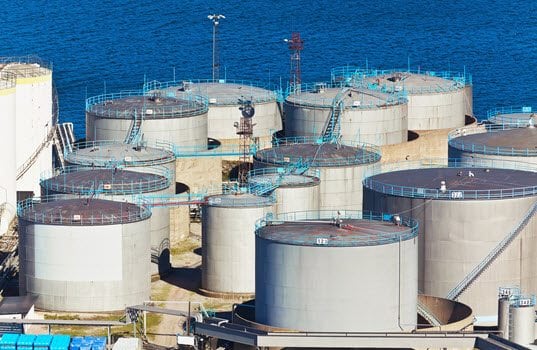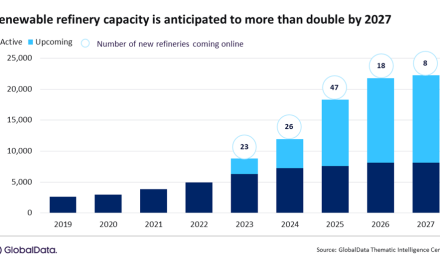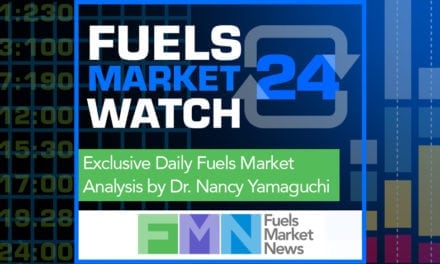 By Ed Burke, Dennis K. Burke Inc.
By Ed Burke, Dennis K. Burke Inc.
2014 wrapped up with a bang, as one of the wilder years in the oil markets that we’ve seen in quite some time. Looking back, as the year started we had the polar vortex shooting natural gas to record highs of over $5/mmbtu. Then we saw the international standoff between Russia and the Ukraine rock the NYMEX, and stir fears of European supply concerns.
Well into June, we had analysts projecting Brent at up to $115/bbl with concerns over potential supply disruptions from Iraq and OPEC in the wake of an ISIS takeover of Tikrit and Baiji, assuming that the insurgents aimed to take the refineries there.
Fast forward to July where it starts to turn—the markets keep sliding downward even with the ongoing Iraq situation and renewed fighting between Israel and Hamas. Despite some blips over inventory reports, or disappointing job reports, oil has continued its slide since the summer. As we rang in the New Year, we were down about 40% since June. It’s been a long time since the closing screens showed RBOB under $2, but that time is upon us again.
As of writing, Jan. 7, 2015, the NYMEX saw ULSD close out at 1.6999 and RBOB close out at 1.3376 for February trading, while crude settled out at 48.65—certainly a far fall from the “new normal” benchmark of $100/bbl we’ve been hanging onto in recent years. (Last January, the 20 day average for February 2014 Crude was 95.51) By the way, the natural gas we saw spiking to $5/mmbtu in January 2014 is trading at 2.871 today for February 2015.
So let’s recap some of the major moments in energy from 2014, and what they may mean for the 2015 outlook.
The U.S. Becomes a Major Price Influencer
The wild success of domestic fracking has turned the global oil market upside down, essentially. The U.S. has overtaken Saudi Arabia and Russia to become the world’s biggest oil producer, and that fact has a lot to do with how the market has moved steadily downward and why we haven’t seen the spikes we’re used to on news of chaos in the Middle East, or an OPEC country going offline, etc.
Global Supply, Prices, and the Resultant Geopolitics
According to most analysts, the crashing prices we’ve seen on crude are a result of a global oversupply, and lackluster global demand. As U.S. shale production continues to roar forward, and OPEC’s supply continues to hit targets, the world is essentially saturated in oil.
This is pushing a sort of find-the-bottom price war from OPEC. Generally they will drop supply levels to raise prices in a free fall like the one we are in—after all, their nations’ budgets run off of projected oil revenue and can ill afford a 40% short fall. However, some analysts think that the Saudi refusal to curb supply is a two pronged approach to both keep market share, and to test how low the prices must go before U.S. production is forced to slow down.
OPEC did announce a slight decrease in their projected output to the tune of 300K/bpd in early December, but the markets didn’t even flinch at the news suggesting the cartel may not be the powerhouse it once was. It will be interesting to see in 2015 whether they maintain projected output or put the brakes on, and what impact either of those moves may have on pricing.
It’s not just OPEC either– Russia is on the brink of a serious financial meltdown if prices continue to fall, and at the same time they remain unpopular globally after their ongoing standoff with Ukraine. The ruble is down huge, and the financial sanctions put in place by the West are making it difficult for certain oil exploration projects to move forward, especially if American companies are involved.
Also, it’s worth remembering that the U.S. isn’t the only oil producing nation with a high extraction cost. Watch for impacts on Canada, Brazil and Venezuela in the coming year.
Keystone XL
There were some major energy-related political battles in 2014 as well, most notably the ever present Keystone XL debate. This hit a climax point during the midterm election swing, when it became the only chip to be played to try and save the Senate seat in Louisiana for the Democrats. For once, a Keystone bill saw the Senate floor, but it failed to pass.
The new Republican majority has vowed continued action to push Keystone forward. But, in an ironic twist, after the six year wait—oil prices have dropped so substantially and the construction costs have risen so steadily that it makes less financial sense as a project now than at any other time in the past six years.
EPA: Renewable Fuel Standards and Methane Regulation
Last year saw an unlikely coalition of groups uniting against the EPA’s proposal for the RFS Volume requirements, including environmental groups, oil executives and humanitarian groups. Mainly the backlash focused around Ethanol, which has not proven itself the environmentally friendly alternative it was supposed to be, and also about the diversion of food resources for its production.
Issues with the RFS received more commentary than almost any other proposal posted by the EPA, and going into 2015 nothing has been set in stone. So looking at 2015, there is uncertainty about what the final decision will be, which is a tough spot for refiners and producers to be in—essentially one where they will have to be “retroactively compliant.”
In lieu of the RFS mandate however, the biodiesel tax incentives were extended for tax year 2014, benefiting the blenders and producers.
Additionally, in 2014 the White House suggested new regulation on methane emissions, and the EPA issued a series of whitepapers on proposed changes and new rules. The proposed changes would be voluntary for the agricultural sector, and mandatory for the natural gas/fracking sector. Environmental groups cheered the regulations, while industry groups argued that the regulations were unnecessary, given that it’s in their own financial interest to control leakage.
As 2014 ended, it appears the industry was correct—methane emissions have dropped in four of the major U.S. shale plays this year when most recently surveyed. For 2015 we will have to wait and see what the new regulations (if passed) look like, and what kind of cost burden that adds to natural gas producers and ultimately the consumer.
Late in the year, the Administration also started talking about incentivizing carbon reduction, which tiptoes around the idea of a carbon tax.
For the Consumer
So there are obviously major concerns for some industry players who have expensive extraction projects slated or high operational costs, and they’re looking at quickly shrinking margins.
But what about the average consumer?
Things are looking pretty good for the consumer. Gasoline prices are at their lowest since 2009 and continuing to drop. According to Wells Fargo, every 10 cent drop in the price of retail gasoline at the pump frees up nearly 3 billion dollars for consumers to spend elsewhere. We’ll have to see if that’s reflected in retail and consumer confidence numbers, as we roll into the New Year.
Another bonus with lower oil prices is the vastly decreased operating cost for transportation companies, which should help keep consumer goods from over-inflating and may free capital up for new jobs and economic growth in general. “A rising tide lifts all boats,” as they say.
On the flip side, though 2014 saw record gains in the U.S. Stock Market, they’ve begun to crumble away thus far for 2015, notably on the S&P which is being dragged down with slumping oil prices and their impact on major energy players on the index.
Take Aways
There are a lot of issues still up in the air so to speak as we start the New Year. What will happen on taxes? Will we move forward on Keystone? How low will crude prices go, and how long can we sustain production at that “new normal” if it becomes one?









